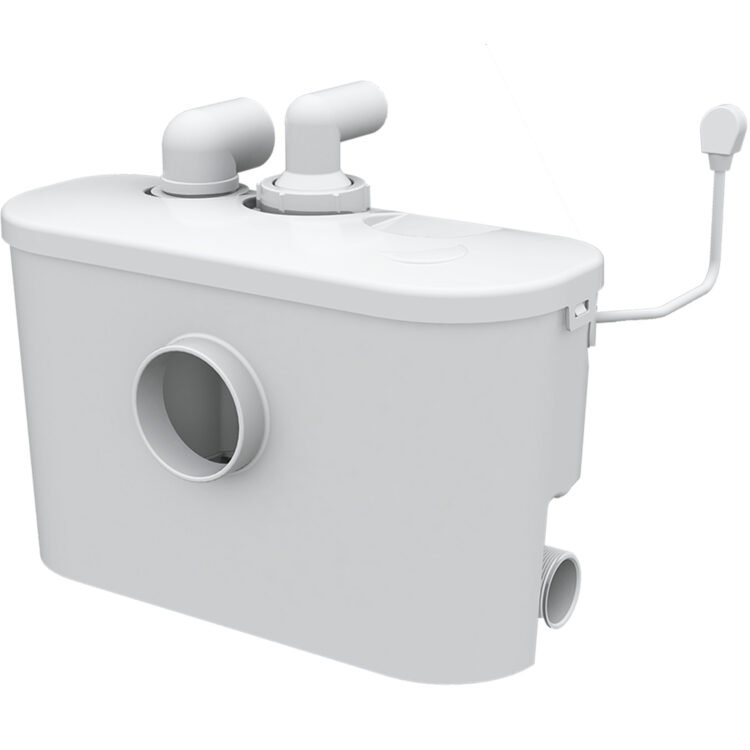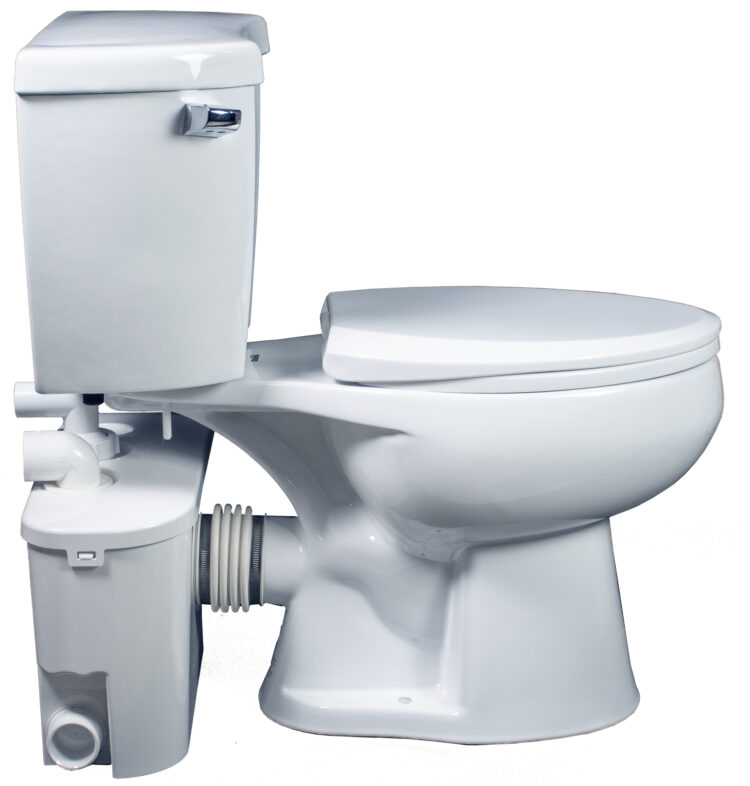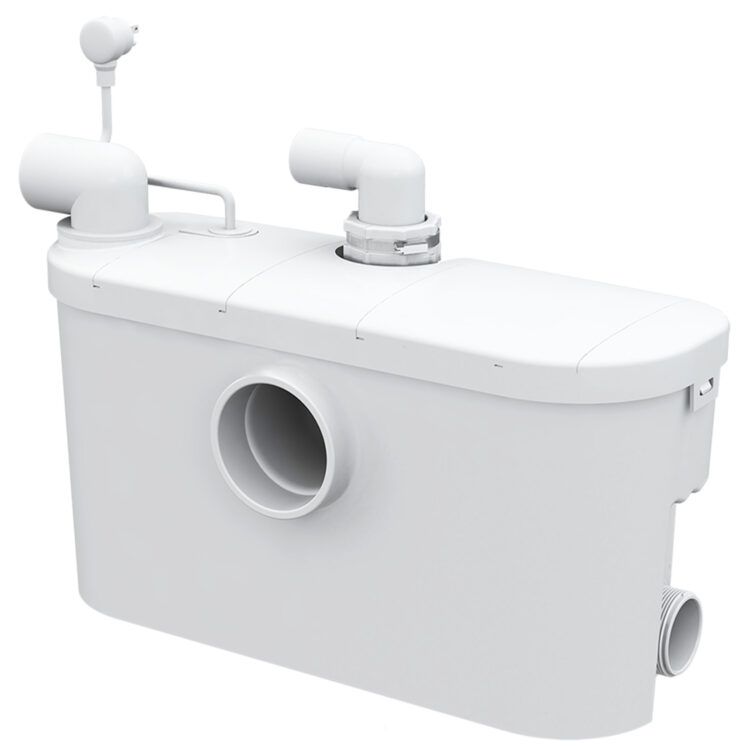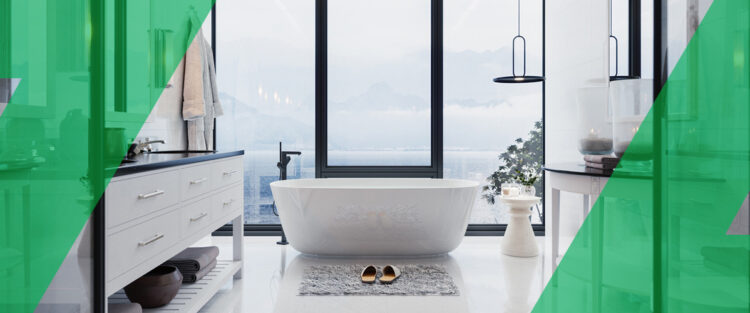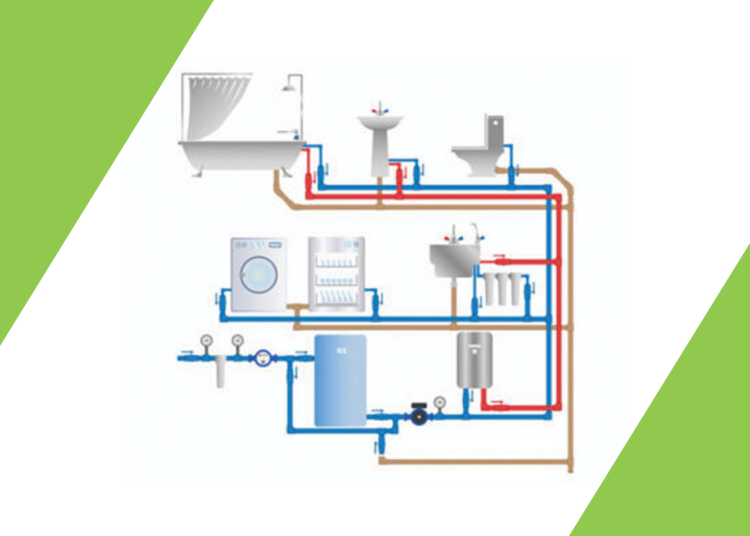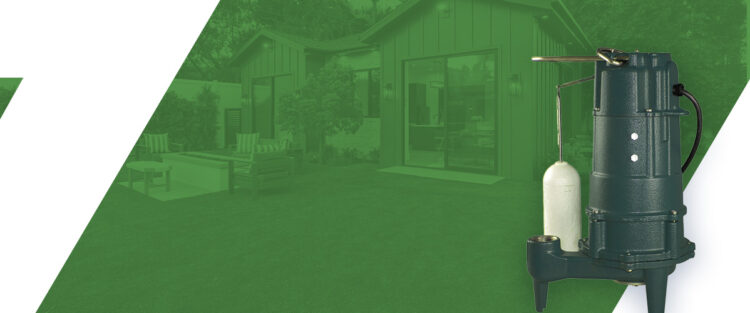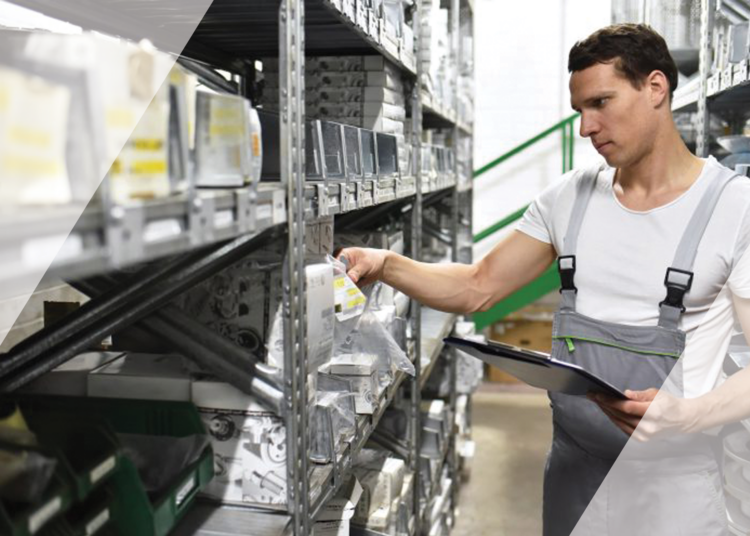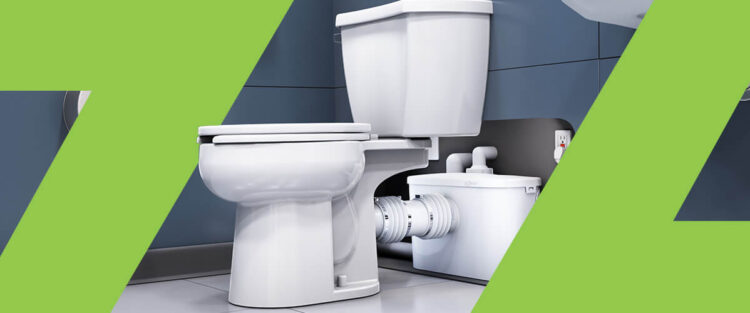
Upflush toilets are growing in popularity in the United States because they make it easier to create bathrooms in smaller spaces. Homeowners can benefit from using upflush toilets because they can add space to their homes and increase property value. Commercial spaces can also utilize upflush toilets to make a more convenient space for customers or employees.
Whether an Airbnb host wants to add another bathroom to their rental, a property manager wants to create a more effective work site, or a homeowner wants to increase their home’s value, upflush toilets are the way to go. This option is less expensive than traditional toilets while providing more versatility and flexibility to meet unique needs. In this guide, you can learn more about upflush toilets, how they work, and the pros and cons of installing one.
What Are Upflush Toilets?
An upflush toilet, sometimes referred to as a macerating toilet, is common in Europe. Over the last few years, these toilets have become popular in the United States. Upflush toilets make it possible to install a toilet in a tight space without adding all new plumbing. These toilets carry waste away from the toilet by moving upward rather than downward like traditional American toilets. Choosing an upflush toilet can give you versatility while saving time and money.
Types of Upflush Toilets
The most common upflush toilets are compact units. These tend to be the least expensive option and operate by grinding waste before sending it to the main drain.
You can also find free-standing ejection toilets. Professionals install these toilets on an elevated platform that is below the incoming waste level. These toilets have a separate pump to handle external source waste.
The third type of upflush toilet is a combination of a traditional one and a sump pump. These toilets tend to be the most expensive out of the three because they require floor excavation and plumbing beneath the floor. These toilets will move waste directly to external sewage or the septic system.
How Does an Upflush Toilet Work?
At first glance, you might not notice many differences between an upflush toilet and a traditional one. You may be able to see exterior differences if the upflush toilet has an extension pipe or additional pieces on the side of the toilet. These pieces are essential for the toilet’s function and make it easy to grind and pass waste.
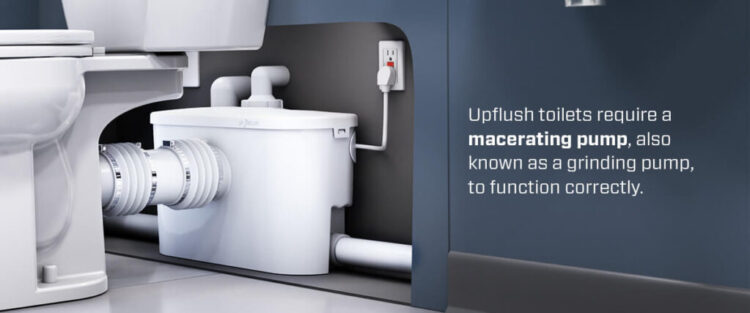
Upflush toilets require a macerating pump, also known as a grinding pump, to function correctly. These pumps are able to grind waste to allow it to flow easily through piping and septic tanks. When you flush the toilet, the pump begins working as the water rises. The macerator uses a cutting blade that moves rapidly to transform the waste. In as little as three seconds, the pump will grind the waste to the appropriate size and send it to the septic tank, emptying it of everything except water to prepare for the next use.
Upflush Toilets Pros and Cons
Upflush toilets have many benefits for homes and commercial spaces. Their convenience and versatility enable them to accommodate a variety of areas and make unique additions or renovations quite easy. However, there are some drawbacks you must be aware of to determine if this toilet will be the best fit for the space you’re working with. Below, we’ve outlined the pros and cons of upflush toilets.
Advantages of Upflush Toilets
The advantages of these toilets are drawing many people to consider them as an option for their residential or commercial space. Homes and businesses can benefit from the versatility and ease of installation. Benefits of upflush toilet systems include:
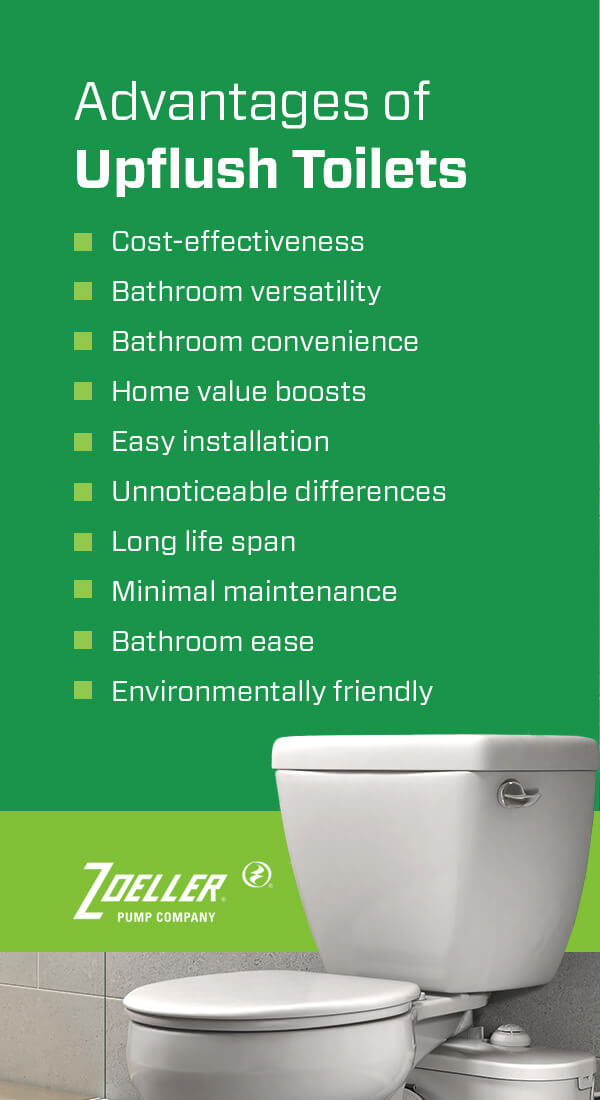
- Cost-effectiveness: Installing an upflush toilet can save thousands of dollars compared to a traditional toilet. Budget-conscious families or businesses needing a quick fix can rely on these systems to do the job quickly and at a fraction of the cost.
- Bathroom versatility: You can add an upflush toilet to any space. Upflush toilets allow people to take control of their bathroom space and imagine it however they want. These toilets only require two pipes and just a few hours of installation with little planning involved.
- Bathroom convenience: You can move these toilets to multiple locations. Whether a business is working on a moving job site or a family is undergoing renovations throughout their home, the simple design of these toilets allows you to move them whenever you want. They’re easy to remove and install without causing damage.
- Home value boosts: A full bathroom can increase a home’s value by up to 20% or higher. Homeowners looking for a great return on their investment and wanting to upsell their property can make this upgrade for a boost in market value.
- Easy installation: It’s possible to install these systems without prior plumbing experience. A professional can make the job easier, but those looking to reduce labor costs can save money by installing the toilet when they have time.
- Unnoticeable differences: The comfort, stability, size, and appearance of upflush toilets are similar or identical to traditional ones, and most people likely won’t notice a difference. Although the addition of a pump and macerator system will appear in the bathroom, everything else will remain the same.
- Long life span: You can go quite a while before needing to replace any components for these toilets. An upflush toilet can last a decade or longer, depending on use and maintenance.
- Minimal maintenance: These units are typically ready to work immediately. The pump’s life requires minimal maintenance, and regular cleaning can keep it in excellent condition for years. People often need to monitor the pump to ensure it doesn’t run dry by flushing regularly. Keeping an eye on the pump performance will also help ensure that upflush toilet owners don’t have a slow-running toilet after prolonged use.
- Bathroom ease: Creating a full bathroom can be simple and easy. Whether reimagining an old storage space, a lonesome closet, or another area without much use, upflush toilets make it much easier to transform any room into a bathroom. You can add a shower and sink anywhere to make additional comfortable space for customers, friends, families, and other guests.
- Environmentally friendly: Upflush toilets can save more water than traditional toilets. This solution can help conserve environmental resources and save you money over time. You may be able to use additional environmentally friendly pieces to create a green bathroom that benefits the environment.
Disadvantages of Upflush Toilets
Upflush toilets are great for homeowners and businesses looking for a quick solution to satisfy their bathroom needs. However, these systems have several downsides that you must understand to determine whether they make sense for each application. The cons of upflush toilets include:
- Upfront costs: Although individuals can save money through installation costs and water usage, the upfront cost can be higher than some traditional toilets. However, people can save hundreds, if not thousands, of dollars by avoiding the need to modify their existing plumbing systems for a traditional toilet.
- Louder flush noise: The grinding pump can cause these toilets to sound louder when you flush them. This problem may not be bothersome in loud commercial settings where noise is frequent, but it could be annoying for offices and homeowners who rely on quiet spaces. The noise could impact where a family would install their new bathroom. For example, some families may want to avoid placing an upflush toilet next to a baby’s room or shared space like the living room because it could disturb the quiet atmosphere.
- Power supply needs: These toilets require a power source to function. If there is a power outage and no backup source to power the toiler, the pump won’t work. Families or businesses that live and operate in areas where this situation is common may want to invest in additional power options to ensure they can rely on their toilet when they need it most.
- Smell: Upflush toilets can emit an unpleasant odor. Scale buildup from waste and scale minerals can create a less enjoyable space. However, proper descaling maintenance can reduce or eliminate this issue before it becomes a regular occurrence or problem.
Cleaning a Macerating Toilet
When cleaning these toilets to prevent odors and ensure proper function, it is essential to take extra precautions. Different levels of use will require various levels of cleaning. In general, cleaning these toilets once a week can prolong their life and ensure they continue functioning correctly and efficiently. Additional services, such as a once-a-year professional service, can preserve the inner workings of the toilet to boost satisfaction.
Turning off the power source or disconnecting the toilet from the outlet will help prevent accidents during cleaning. Special cleaners for these toilets can also prevent damage. For example, abrasive cleaners can damage the pipes and the pump.
The rim and inside of the bowl will need additional attention to remove waste and ensure there are fewer unpleasant odors. A damp sponge or cloth is suitable for the lid and tank.
When it’s time to clean the macerator pump or pipes, a small toothbrush can help remove any debris or buildup. Rinsing the pump with water can clear the remaining debris and ensure the toilet is ready for the next use. Plug the toilet back into the power source before using it.
When to Choose an Upflush Toilet
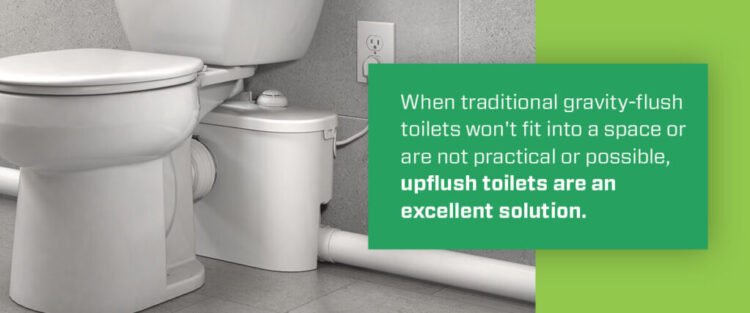
When traditional gravity-flush toilets won’t fit into a space or are not practical or possible, upflush toilets are an excellent solution. Small areas or nontraditional bathrooms can quickly become additional comfortable spaces with this option.
These systems are also excellent for situations when a homeowner or business wants to create a bathroom in areas where water pressure is low or places below the existing lateral lines. Basements, ground floors, outbuildings, workshops, and garages are excellent spaces for a new bathroom.
Keep in mind that some local plumbing codes do not allow for upflush toilets, so homeowners and businesses must be aware of their local requirements before beginning the installation process.
Installing an Upflush Toilet
Upflush toilet installation requires little planning or time. Whether someone is interested in installing the toilet themselves or wants to understand how a professional will do so in their space, we’ve outlined the basic steps. Whoever is doing the installation will need a variety of materials and tools, including:
- Hammer
- Wrench
- Screwdriver
- Fasteners
- Mounting bolts
- The toilet
- Materials for a base
- Vent pipes
- Water hose
- Rubber flange
- Water
Installation begins with knowing the distance to the sewer pipe and the height between the pipe and the discharge point. This number will determine the pump horsepower that the toilet will need. The space of the installation will need to have a nearby power source, such as an outlet.
If the area requires a base, additional materials may be necessary. For example, wooden planks, cement, mix sand, and water can create a DIY base. After forming the base, the cement will need to cure for about a week before the next step can begin.
Then, the toilet will need a support flange, which requires a screwdriver and fasteners. The mounting bolts will need to be the proper length to reach the base.
A user manual will describe how to install the pumping unit. After the float switch, discharge pipe, and pump installation, some tests to verify pump performance can be helpful to ensure the unit is working correctly.
After discharge pipe installation, it is helpful to seal the pipes to prevent leaks. The pump will connect to the receptacle, and filling the toilet with a water source will help the pump begin to work once the water reaches a certain level. Then, the toilet will need the rubber flange and additional vent pipe.
The free end of the discharging pipe must connect to a backflow device to prevent water from returning. The free end of the backflow device must connect with the property’s main sewer line.
The bathroom will need an access panel before placing the toilet into place. You can mount the unit in place with bolts before installing the supply hose and stop valve. At this point, a shower, sink, or bathtub can connect to the upflush unit to create a complete bathroom.
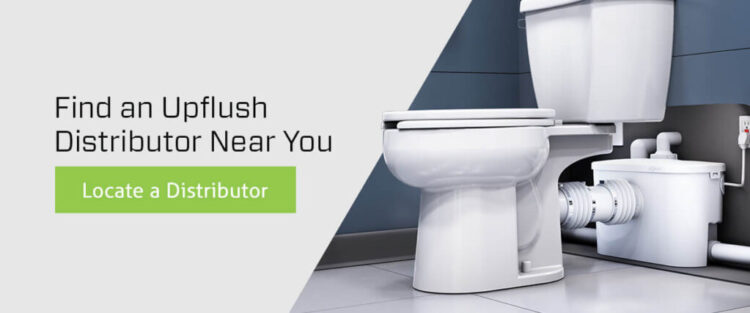
Find an Upflush Distributor Near You
Zoeller Pump Company is one of the oldest family-owned North American water pump manufacturers. Over the last 70 years, we’ve become a dependable leader in our industry, and we continue to expand and improve it through our quality products and processes.
We’re committed to delivering quality that exceeds our customers’ expectations. Our employees are dedicated to stability and growth, empowering us to form a knowledgeable and passionate team that’s always ready to help.
Our products are made in the USA using 95% U.S. content. You can find our products throughout Mexico, Canada, and the United States, as well as other locations around the world. We’re ready to answer all of your pumping needs because we have five distinct divisions to address any concern, problem, or need. Find your nearest distributor to access a knowledgeable team and a vast range of high-quality products for your applications.
Upflush toilets require a macerating pump, also known as a grinding pump, to function correctly. These pumps are able to grind waste to allow it to flow easily through piping and septic tanks. When you flush the toilet, the pump begins working as the water rises. The macerator uses a cutting blade that moves rapidly to transform the waste. In as little as three seconds, the pump will grind the waste to the appropriate size and send it to the septic tank, emptying it of everything except water to prepare for the next use." } }] }

